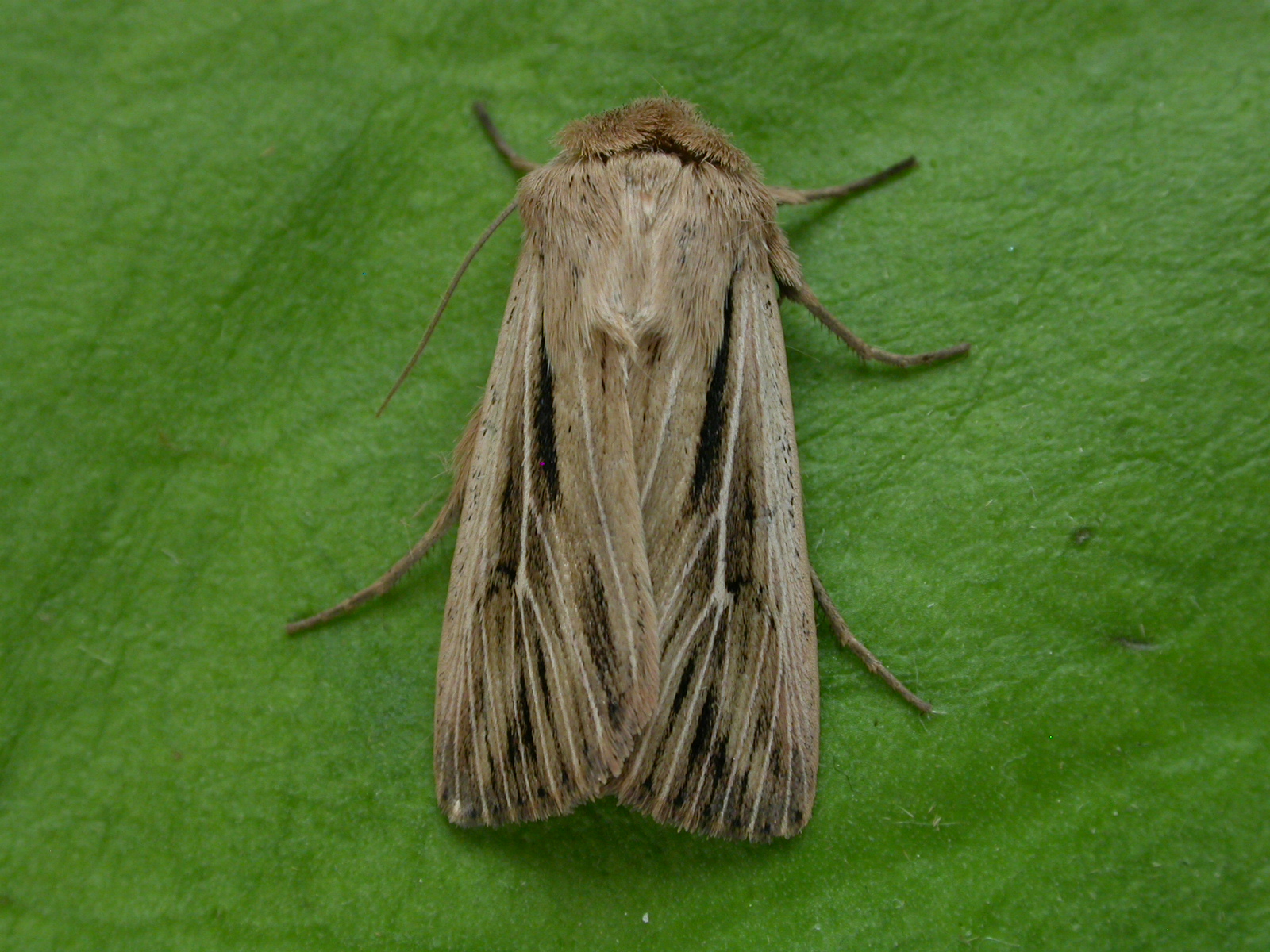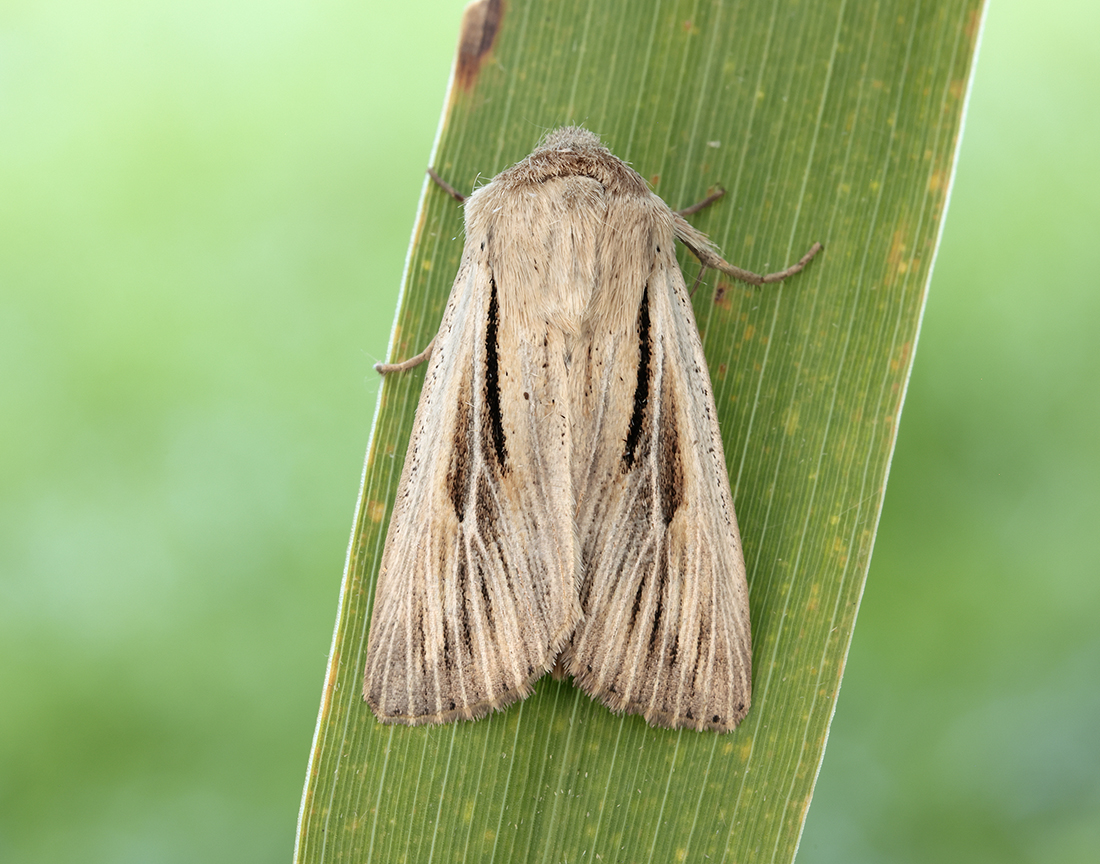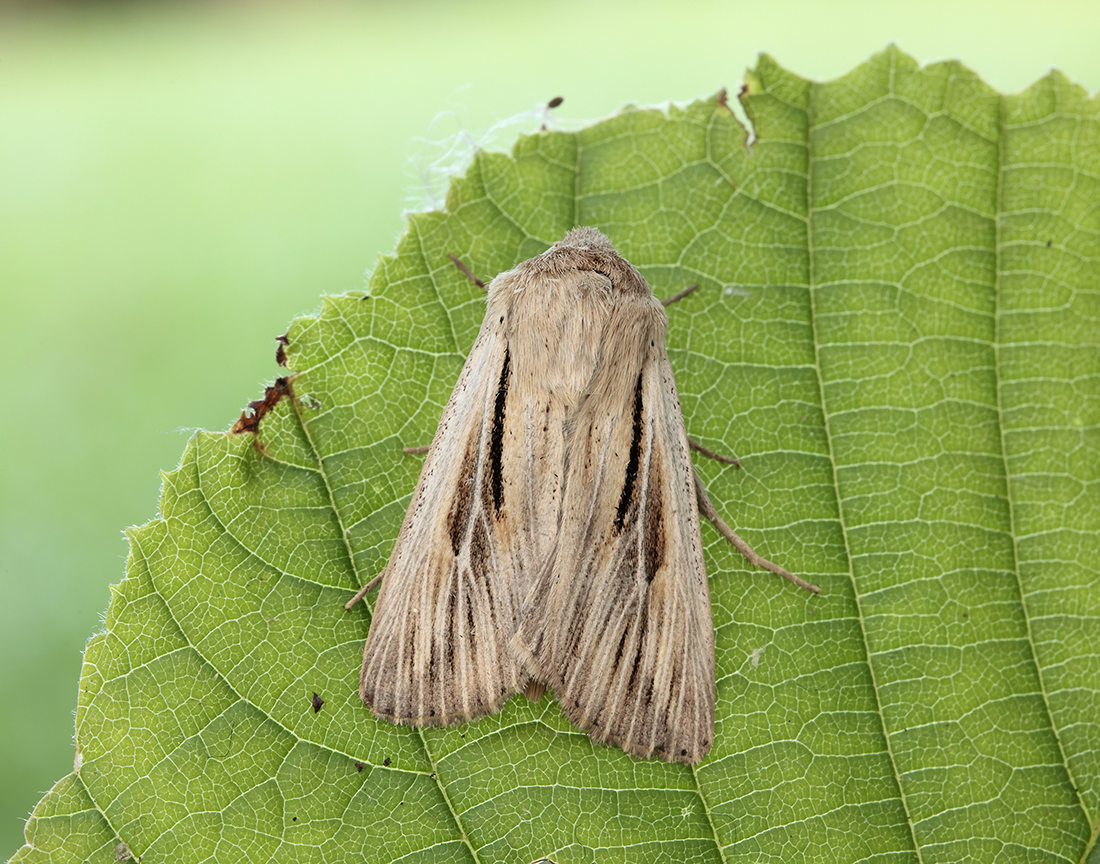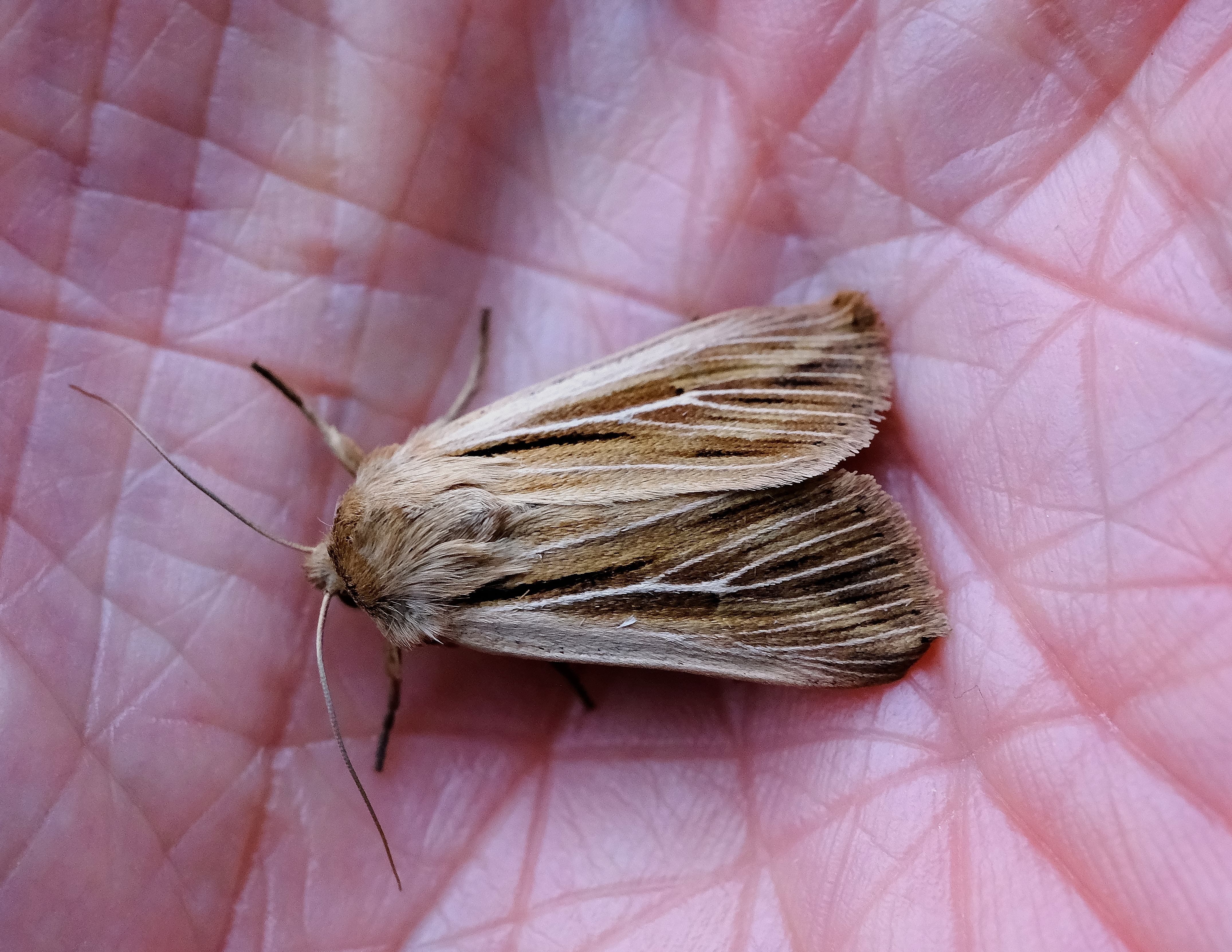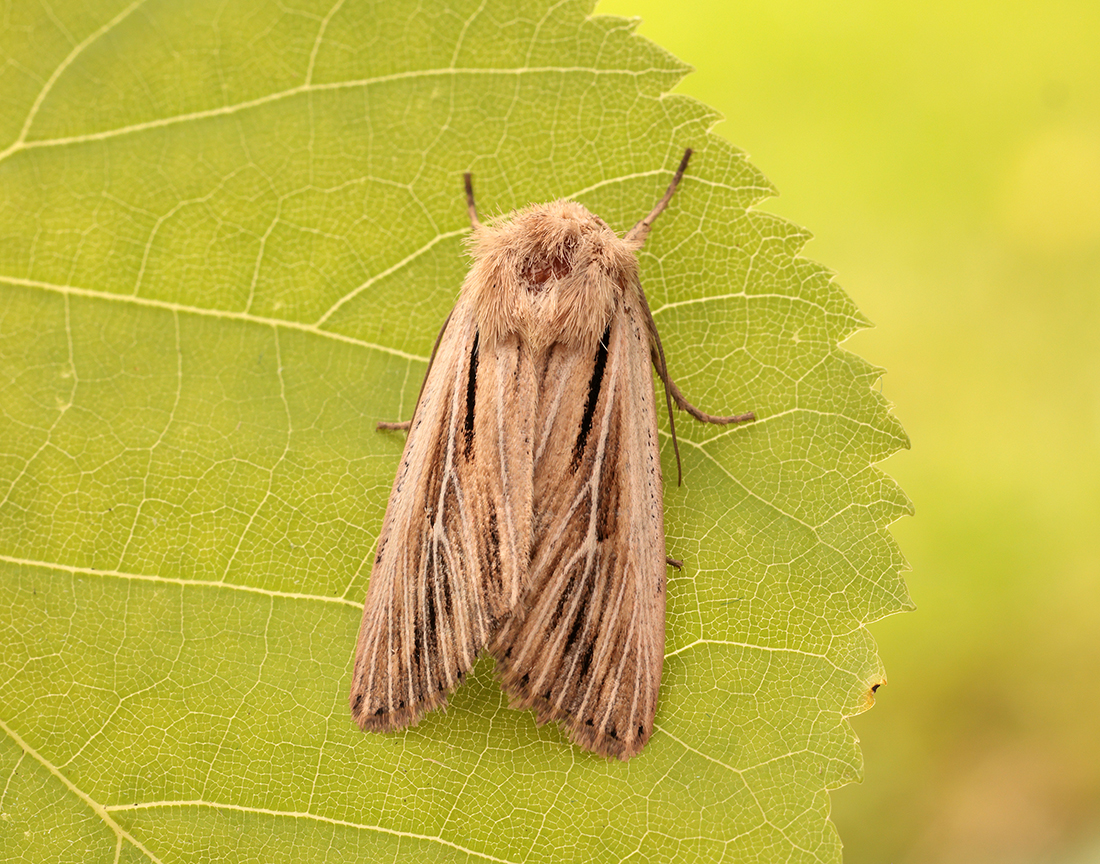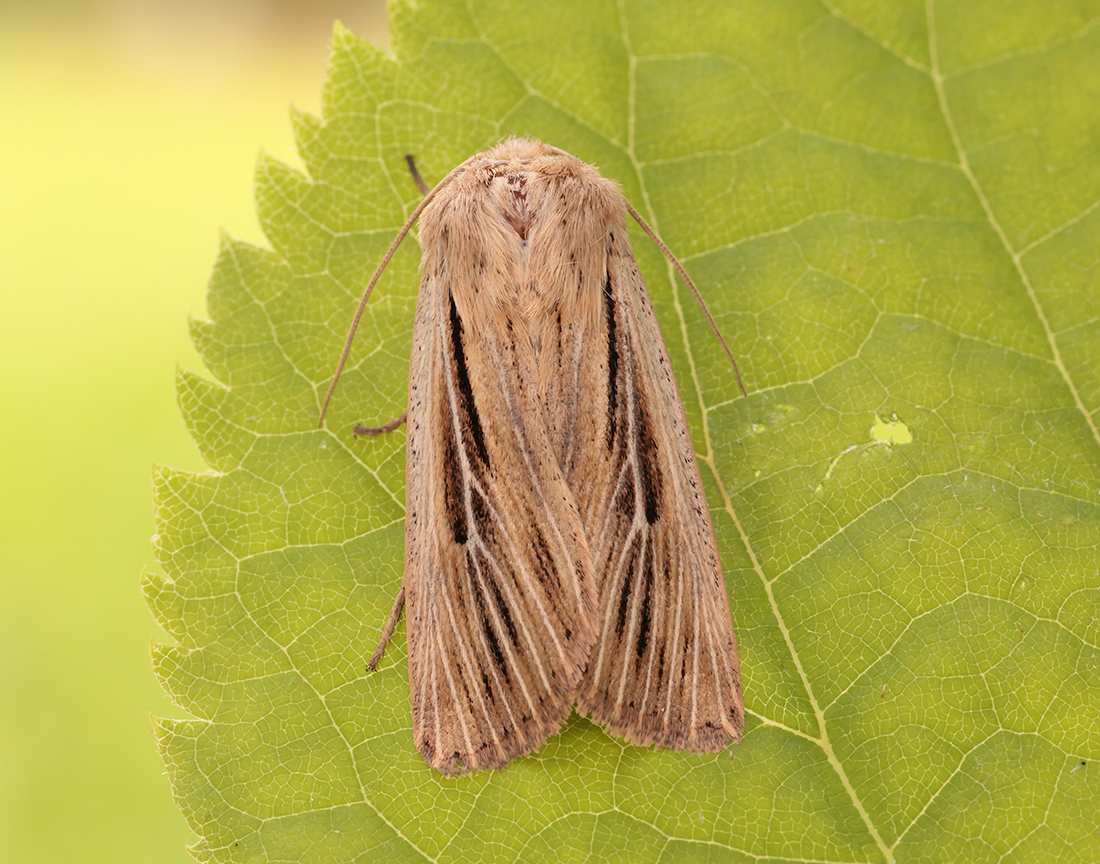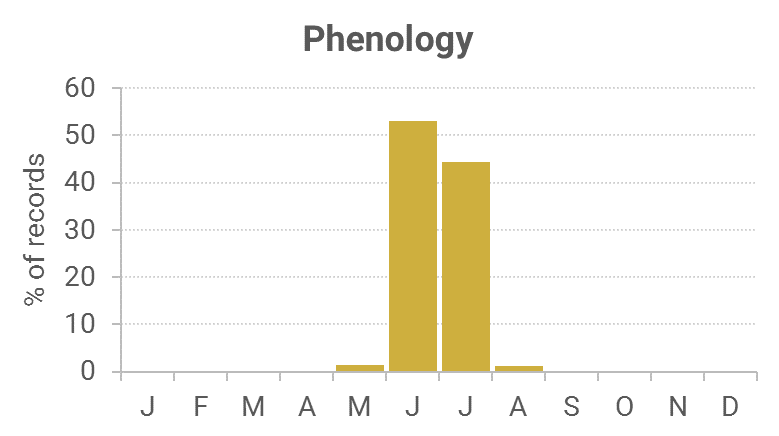Identification
The boldly striped forewing with a broad whitish band along the costa and black streaks from the basal area and also at the termen should assist identity.
Recording Method.
Attracted to light, also comes to sugar and flowers.
Life cycle
One generation. Overwinters as a fully grown larva in a cocoon underground from which it pupates in spring. The larvae feed during July to September at night.
Larval foodplants
Grasses.
Habitat
Fens and marshes mainly, but also damp woodland and gardens.
History
Lennon (1863) had recorded it from Marchmount (VC72) in 1862. Douglas Robinson (1870-71) had found it rather common at sugar during July on Almorness (VC73). Gordon (1913) had found it to be common and generally distributed at sugar and among rushes, around Corsemalzie, Wigtownshire. Earliest date was 15th June 1899.
William Evans received a specimen from Mowat, the Killantringan lighthouse keeper during 1914 to aid his insect migration studies.
Sir Arthur Duncan (1909-84) during his lifetime had found it at Closeburn, Tynron and Castlehill, Dumfries (all VC72).
During 1975-90 it was recorded seventeen times from six of the Rothamsted stations, Penninghame not recording it. During the early 1980s it was regularly trapped on the Hensol Estate.
Of the 160 records during 1993-2010 well over half of them came from a regular trapped site at Kirkton, with the rest from widely scattered sites across the region, some being well inland.



